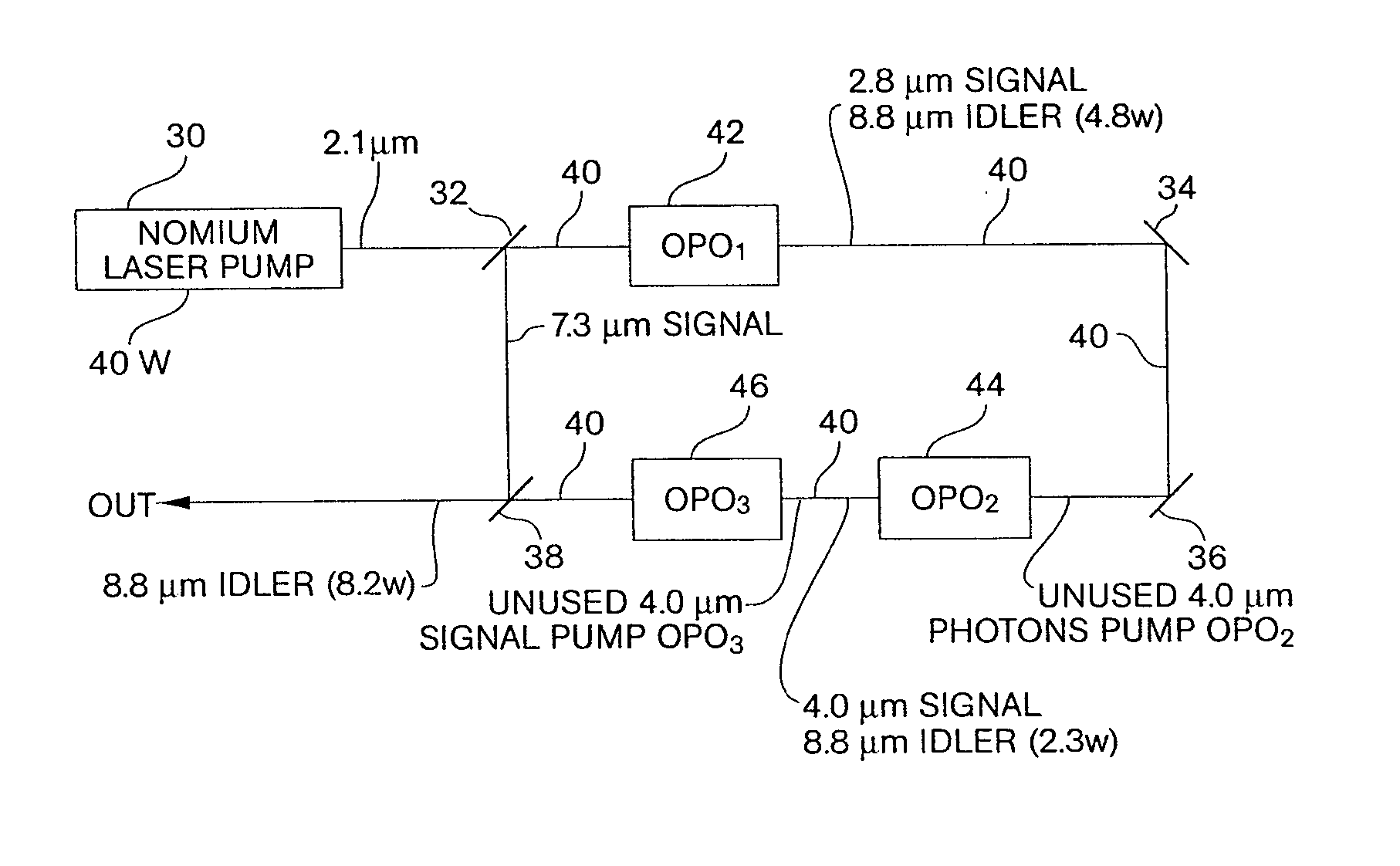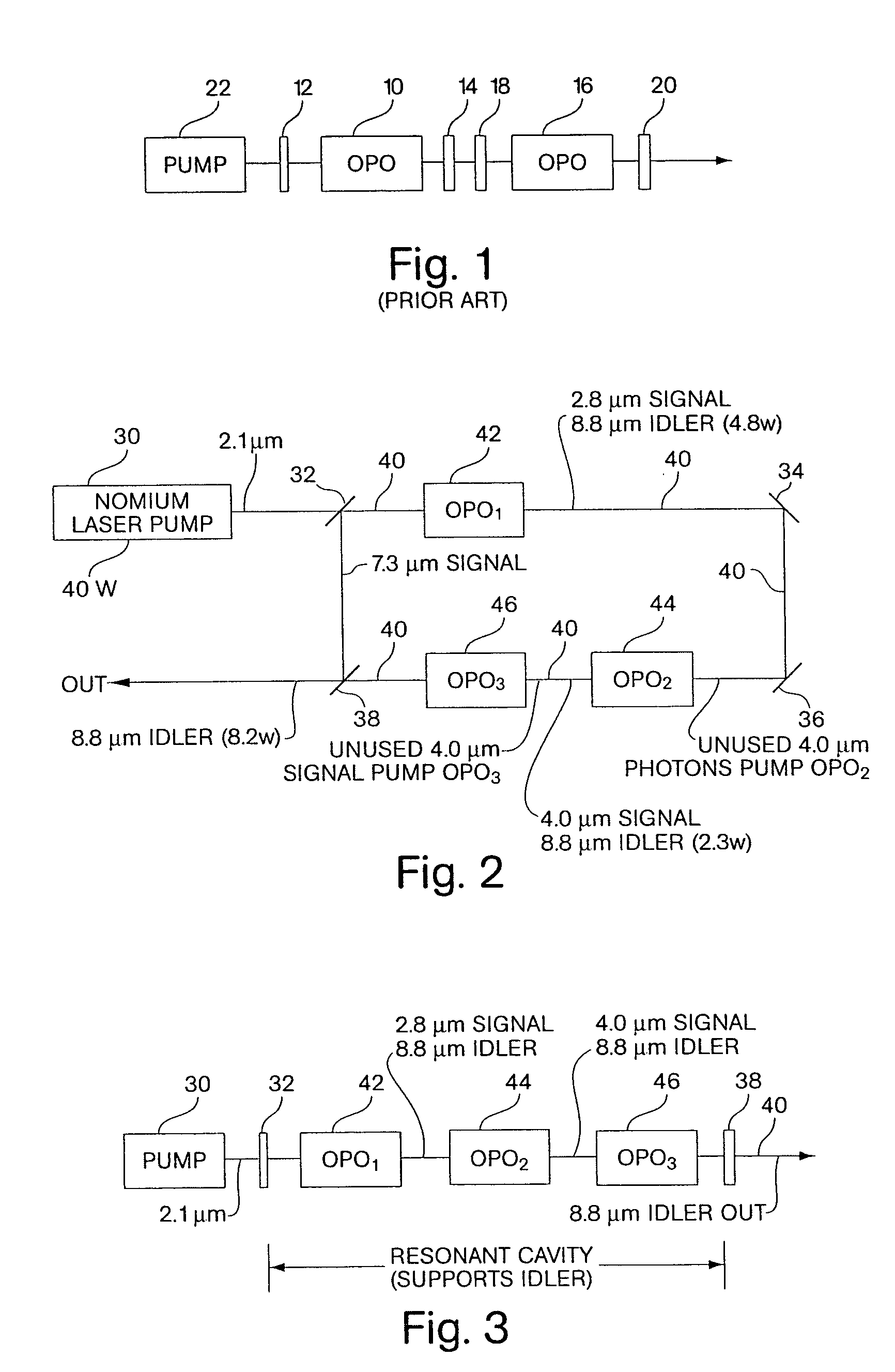Efficient optical parametric oscillator with photon recycling
a technology of optical parametric oscillators and photon recycling, applied in the direction of instruments, laser details, light demodulation, etc., can solve the problems of buildup of idler power with each successive parametric process, and achieve the effect of effectively building up parametric processes and double process efficiency
- Summary
- Abstract
- Description
- Claims
- Application Information
AI Technical Summary
Benefits of technology
Problems solved by technology
Method used
Image
Examples
Embodiment Construction
[0025] Referring now to FIG. 1, in a prior art tandem optical parametric oscillator configuration, a first optical parametric oscillator 10 is located in a cavity bounded by mirrors 12 and 14, whereas a second parametric oscillator 16 is located in the cavity bounded by mirrors 18 and 20. The first of the tandem optical parametric oscillators is pumped by a pump 22, with the output of the optical parametric oscillator 10 pumping optical parametric oscillator 16.
[0026] The system in FIG. 1 while capable of converting pump wavelengths into longer wavelengths, results in an overall efficiency of no greater than 10%. This means that if the pumping power is 40-W, the output power for the tandem system is only 4-W.
[0027] Referring to FIG. 2, unused signal photons may be reintroduced to pump follow-on optical parametric oscillators as will be described.
[0028] In this figure a Holmium pump laser 30 produces a 2.1 μm 40-W output coupled into a ring cavity defined by mirrors 32, 34, 36 and...
PUM
| Property | Measurement | Unit |
|---|---|---|
| idler wavelength | aaaaa | aaaaa |
| pump wavelength | aaaaa | aaaaa |
| wavelength | aaaaa | aaaaa |
Abstract
Description
Claims
Application Information
 Login to View More
Login to View More - R&D
- Intellectual Property
- Life Sciences
- Materials
- Tech Scout
- Unparalleled Data Quality
- Higher Quality Content
- 60% Fewer Hallucinations
Browse by: Latest US Patents, China's latest patents, Technical Efficacy Thesaurus, Application Domain, Technology Topic, Popular Technical Reports.
© 2025 PatSnap. All rights reserved.Legal|Privacy policy|Modern Slavery Act Transparency Statement|Sitemap|About US| Contact US: help@patsnap.com


